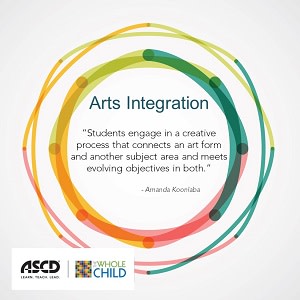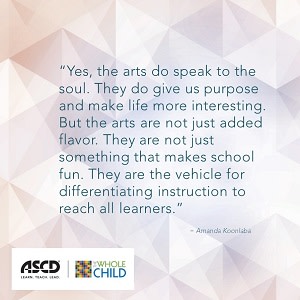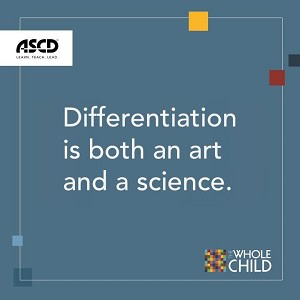Academics and education researchers have long used the phrase “hidden curriculum” to describe the subtle processes that determine achievement in schools. First introduced by social scientist Phillip Jackson in 1968, the hidden curriculum includes implicit rules and norms that educators pass on without consciously realizing or teaching them, including interactions, modeling, systems, relationships, communication styles, and behaviors that take place in a school.
As a professor of educational leadership, I believe the hidden curriculum contains useable strategies for getting ahead in life. The way our formal curricula are structured—largely focusing on names, dates, and figures and then requesting students regurgitate such information—does not leave room for life lessons on how to succeed. All students need a chance to learn about the social, cultural, and environmental resources at their disposal for when they get stuck with real-life problems that they have to figure out on their own. What they need, then, is the hidden curriculum.
The hidden curriculum encompasses unspoken norms within the dominant cultural context of education, implying how students should think, speak, and behave to achieve academic success. But to learn the hidden curriculum, one must, of course, have access to it. Because the hidden curriculum is implicitly passed on, rather than explicitly taught, it remains a restricted and exclusive resource available only to those students already familiar with its conventions. For example, the hidden curriculum is often inaccessible for Black students who are overrepresented in school suspensions and placement into remedial and specialized education programs, and underrepresented in honors courses.
The way to remedy these disparities is to unhide the hidden curriculum altogether and intentionally teach it to all students. Until we do that, we will continue to sort students inequitably, inhibiting the opportunities students need to become scholastically successful. When we keep the hidden curriculum covert, we only maintain our status quo by perpetuating the persisting opportunity gaps plaguing our schools. This school year, I propose we expose the hidden curriculum and harness the life lessons it contains to give all students a fairer shot at achievement, starting with these three main pillars:
1. Affirm for all students that school is a place where they belong and are valued.
School is a time when many students are figuring out their identities. Educators must work to offer students opportunities that help them see their learning as relevant to who they are and what they value. Formal curricula expect students to make these connections on their own with little to no guidance. As a result, many students feel disconnected from their school environments, unable to find personal meaning or relevance in their learning. Harnessing the hidden curriculum helps students achieve by closing that distance between school and self. To do so, educators must help students feel fully invited to discuss topics that matter to them in educational contexts and create opportunities that encourage students to forge connections between academics and the outside world.
Some schools, for example, offer after-school programs where students can engage with age-appropriate books that cannot be taught during school hours, such as Ta-Nehisi Coates’ Between the World and Me, which addresses the daily experiences of living in a society still plagued by interpersonal and structural racism. Other schools celebrate and do not shun marginalized populations, such as the LGBTQ+ community, helping students volunteer with community organizations in order to learn skills related to causes they care about.
When educators view students as stakeholders of their school and their community, they create opportunities for students to meaningfully engage.
Students with access to such opportunities become deft at aligning their own interests with whatever is mandated that they learn—and educators play a key role in supporting such alignment. When educators view students as stakeholders of their school and their community, they create opportunities for students to meaningfully engage in conversations around historic contexts and contemporary issues that matter to them.
2. Bolster students’ confidence by increasing representation.
We must work to increase the visibility of marginalized and underrepresented communities within school spaces, so that students who come from these backgrounds feel confident about participating in academic environments. Take Jay, for example: Jay grew up in the South Bronx and every day on his way to school he walked by multiple gangs who tried to recruit him. Although he was academically gifted, Jay wasn’t sure if he could actually go to college because he knew few people who did. In his junior year of high school, his principal started a peer-mentoring program, where college students from the surrounding neighborhood came to the school to offer tutoring help. When Jay saw kids going to college who looked like him, talked like him, and shared the same interests as him, he realized he could go someday too.
The implicit rules and social norms of the hidden curriculum help students learn how to ask for help, how to network, and how to offer themselves as a resource to others, too. These are tools for life. By keeping these tools hidden, educators restrict them to students already considered “achievers,” rather than making them available to all students. Exposing the hidden curriculum might mean bringing in community members to help expand students’ notions of success through representation, as Jay’s principal did, or it might mean having a more diverse teaching force in a school to help children of all backgrounds achieve and buy-in. Filling these gaps in human capital can be challenging, but doing so is part of helping all students see themselves in school by helping them access the social opportunities they need to thrive.
3. Support student and teacher mental health by building relationships.
Young people today are experiencing record low mental health indicators, such as anxiety, depression, and isolation. At the same time, qualified professionals are fleeing our public education system in record numbers through a national teacher shortage. These are not mutually exclusive phenomena. While our formal curricula have no tools for assessing, or even considering, student mental health, perhaps here, too, the hidden curriculum can be leveraged for good.
Let’s take another example: Sarah, a high-achieving student and valedictorian, secretly suffered from panic attacks. While the formal curriculum does not have a protocol for dealing with students’ social and emotional needs, the hidden curriculum—which exists within relationships and interactions—does. One day when she had a panic attack in front of her college guidance counselor, the counselor was able to help connect Sarah to a therapist. As Sarah learned how to manage her panic attacks, she began to realize her deeper motivations for doing well in school. Her friendships and relationships with teachers improved. She gave a brilliant graduation speech about how achievement is as important as wellbeing. Teachers like Sarah’s need encouragement and guidelines for helping students, as well as themselves, to secure wellness.
When we focus on these systems at the expense of relationships, schools lose their magic touch.
We may not quite realize how many of our students or teachers are going through what Sarah went through—overburdening themselves and risking their health to “achieve” in a rigid system. While the pandemic should have posed opportunities to reimagine education, we often resort to the approaches of old, defaulting to high stakes testing and accountability standards. When we focus on these systems at the expense of relationships, schools lose their magic touch. Simple interventions such as morning mindfulness routines are incredibly effective at fostering empathy and attention and helping us remember what really matters in all of this, promoting mental health through establishing meaningful relationships.
Rethinking Achievement
While the frenzy of a new school year is certain to be exciting and also stressful, this year we should dare to think differently about achievement. The hidden curriculum contains more of the elements to real-world achievement than we might realize—imbedded in its teachings are lessons of relevance and personal value, representation and confident engagement, and relationship-building. The sweeping imbalances in opportunities that we see across education can be attributed to keeping these important values a secret. By making visible the hidden curriculum and folding it into our formal curriculum, we can help all students thrive.








